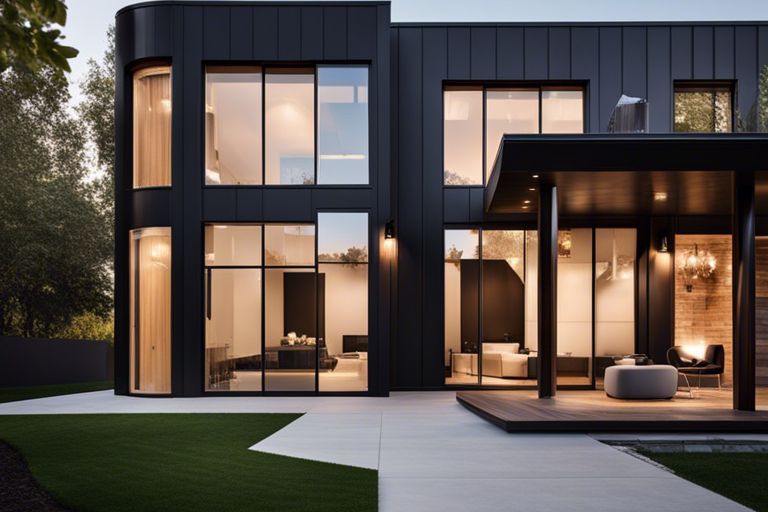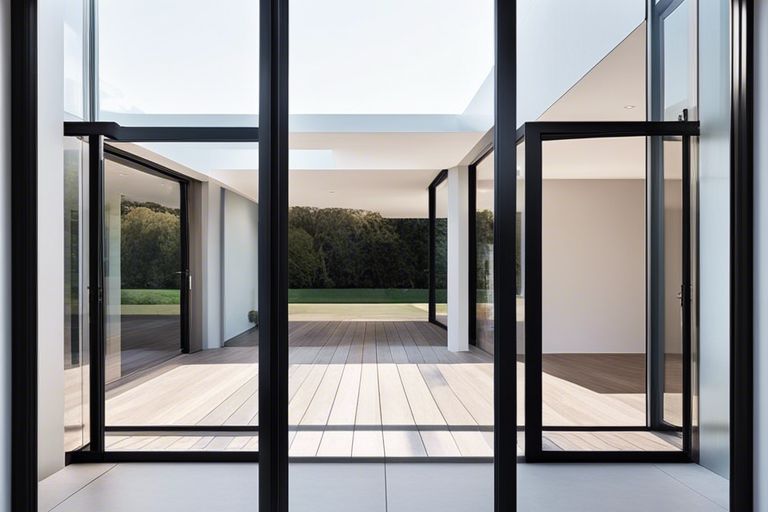When it comes to flat rooflights, ensuring proper waterproofing and leak prevention is crucial for maintaining the integrity of your building. The risk of water penetration through poorly sealed rooflights can lead to extensive damage, including rot, mould growth, and structural issues. It is essential to use high-quality materials and follow correct installation techniques to prevent leaks and water ingress. Regular inspections and maintenance can help identify and address any potential issues before they escalate. By prioritising waterproofing and leak prevention for flat rooflights, you can safeguard your property against costly water damage and ensure longevity for your rooflights.
Key Takeaways:
- Choose the right materials: Select high-quality waterproofing materials specifically designed for flat rooflights to ensure long-lasting protection against leaks.
- Professional installation is crucial: To prevent leaks and ensure proper waterproofing, it is essential to have flat rooflights installed by experienced professionals with knowledge of best practices.
- Maintenance is key: Regular inspections and maintenance of flat rooflights can help identify potential issues early on and prevent leaks before they worsen.
Materials and Techniques for Waterproofing
Understanding Different Waterproofing Materials
When it comes to waterproofing flat rooflights, it is essential to understand the different materials available for the job. Common options include liquid waterproofing membranes, bituminous sheet membranes, and single-ply membranes. Liquid waterproofing membranes are incredibly versatile and can be easily applied over various surfaces, providing a seamless and flexible barrier against water ingress. Bituminous sheet membranes offer excellent durability and are ideal for areas with high foot traffic. Single-ply membranes are lightweight, easy to install, and resistant to UV exposure.
Each type of waterproofing material has its own strengths and weaknesses, so it’s crucial to choose the right one based on the specific requirements of your rooflight. Understanding the characteristics of each material and how they perform in different conditions will help you make an informed decision to ensure long-lasting protection against leaks and water damage.
Effective Application Techniques for Durability and Longevity
Proper application techniques play a crucial role in the durability and longevity of waterproofing systems for flat rooflights. One key aspect is thorough surface preparation to ensure proper adhesion and coverage. Additionally, paying attention to detail during installation can help prevent common issues such as inadequate coverage or poor seam sealing.
Utilising professional installation services or following manufacturer guidelines can significantly improve the effectiveness of the waterproofing system. With the correct application techniques, you can enhance the performance and lifespan of your flat rooflight, providing reliable protection against water infiltration for years to come.
Effective application techniques are critical in ensuring that the waterproofing materials perform as intended, offering maximum protection against leaks and water damage. By investing time and effort in proper installation, you can avoid costly repairs and maintain the integrity of your flat rooflight for the long term.

Design Considerations for Leak Prevention
When it comes to waterproofing and leak prevention for flat rooflights, design considerations play a crucial role in ensuring a watertight installation. By incorporating key strategies into the design phase, the risk of leaks can be significantly reduced.
Optimal Sloping and Drainage Strategies
One of the most important design considerations for leak prevention is implementing optimal sloping and drainage strategies. Ensuring that the rooflight is installed with the correct slope will prevent water from pooling and causing potential leaks. Proper drainage systems, such as gutters and downpipes, should also be integrated into the design to efficiently divert water away from the rooflight.
Additionally, incorporating overflow provisions is essential to prevent water from accumulating during heavy rainfall. By including overflow outlets or outlets with a higher capacity, excess water can safely drain away, reducing the risk of leaks and water damage.
Selecting the Right Flat Rooflight for Your Roof Configuration
Choosing the right flat rooflight for your roof configuration is paramount in ensuring a secure and watertight fit. Consider factors such as the size and shape of the rooflight, as well as its compatibility with the roofing materials used. It’s crucial to select a high-quality rooflight that is specifically designed for flat roofs to minimise the risk of leaks.
Look for features such as integral flashing details and welded corners to enhance the weatherproofing capabilities of the rooflight. These design elements help create a seamless barrier against water ingress, providing long-lasting protection for your flat roof.

Maintenance and Regular Inspections
Ensuring the longevity and effectiveness of your flat rooflight requires consistent maintenance and regular inspections. By staying proactive and addressing issues promptly, you can prevent water ingress and costly damages to your property.
Routine Maintenance Steps to Prevent Leaks
Regularly inspecting the seals and gaskets around your flat rooflight is crucial to preventing leaks. Clean debris and dirt from the drains and ensure they are clear of any blockages. Additionally, check for any signs of standing water, as this can indicate poor drainage and eventually lead to leaks.
It is recommended to clean your flat rooflight at least twice a year to remove dirt, grime, and other debris that can compromise its waterproofing capabilities. Pay attention to any discolouration or deterioration of the seals, as these are signs that they may need replacing to maintain their effectiveness.
Identifying and Addressing Common Wear and Tear Issues
Common wear and tear issues with flat rooflights include cracked seals, warped frames, and corroded metal components. These issues can lead to water seepage and structural damage if left unattended. Regular inspections can help identify these issues early on and prevent further deterioration.
One of the most important tasks during inspections is to check for ponding water on the rooflight, as this can indicate a design flaw or deterioration of the structure. Addressing these issues promptly is crucial to maintaining the integrity of your flat rooflight and preventing costly repairs in the future.
Regular maintenance and inspections are key to ensuring the long-term performance of your flat rooflight. By following these simple steps and addressing wear and tear issues promptly, you can prolong the life of your rooflight and protect your property from water damage.

Troubleshooting and Repairs
Flat rooflights are a beautiful addition to any space, but leaks can be a common issue that needs to be addressed promptly. In this chapter, we will discuss troubleshooting methods and repair solutions to help you maintain a watertight environment under your rooflights.
Steps for Identifying the Source of a Leak
When dealing with a leaky flat rooflight, the first step is to inspect the surrounding area for any obvious signs of damage or wear. Check for cracked or deteriorated seals, loose screws, or damaged flashing. If the problem is not visible from the outside, you may need to inspect the interior of the rooflight for any signs of water ingress, such as water stains or damp patches that indicate the leak’s location.
Once you have identified the potential source of the leak, conduct a water test by pouring water over the suspected area and observing any signs of water penetration. This will help you confirm the exact location of the leak and determine the extent of the issue before proceeding with repairs.
Quick Fixes vs. Long-Term Solutions for Leaky Rooflights
When it comes to addressing a leaky flat rooflight, you may be tempted to opt for a quick fix to resolve the issue temporarily. While quick fixes such as sealants or temporary patches can provide immediate relief, they are often not a permanent solution and may lead to recurring leaks in the future.
For a more long-term and effective solution, it is recommended to address the root cause of the leak and invest in professional repairs or replacement of damaged components. By fixing the underlying problem, you can ensure lasting protection against water ingress and prevent costly damage to your property.
Conclusion: Waterproofing and Leak Prevention for Flat Rooflights
Therefore, ensuring proper waterproofing and leak prevention measures are in place for flat rooflights is crucial to protect against water damage and maintain the structural integrity of buildings. By using high-quality materials, such as EPDM rubber membranes and silicone sealants, and following professional installation practices, the risk of leaks and water ingress can be significantly reduced. Regular maintenance and inspections are also key to identifying and addressing any potential issues before they escalate. Investing in effective waterproofing solutions for flat rooflights is a smart decision that can save both money and hassle in the long run.
FAQ
Q: What are the common causes of leaks in flat rooflights?
A: The common causes of leaks in flat rooflights are poor installation, damaged flashing, deteriorated seals, blocked drainage system, and inadequate maintenance.
Q: How can I prevent leaks in flat rooflights?
A: To prevent leaks in flat rooflights, ensure proper installation by qualified professionals, regularly inspect and maintain the rooflight, keep the drainage system clear from debris, and promptly address any signs of damage or wear.
Q: What are the waterproofing options available for flat rooflights?
A: The waterproofing options for flat rooflights include using high-quality sealants, installing EPDM or TPO membranes, applying liquid roof coatings, and incorporating drainage solutions like gutters and scuppers to divert water away from the rooflight.






